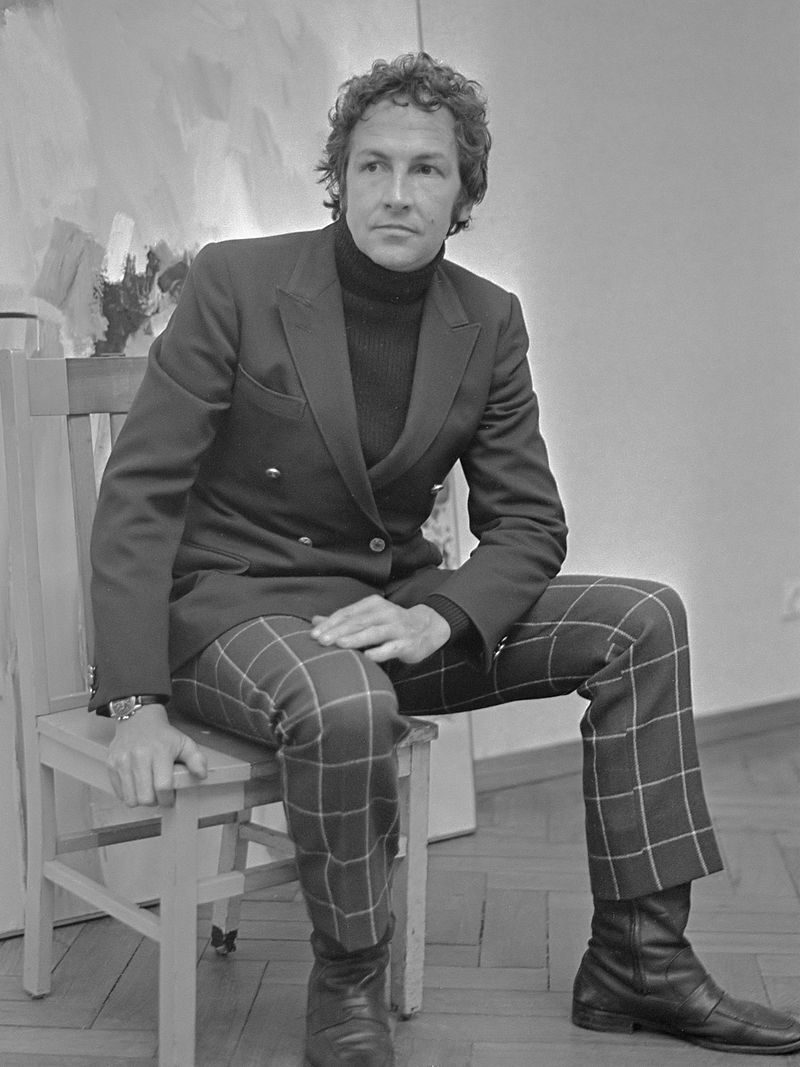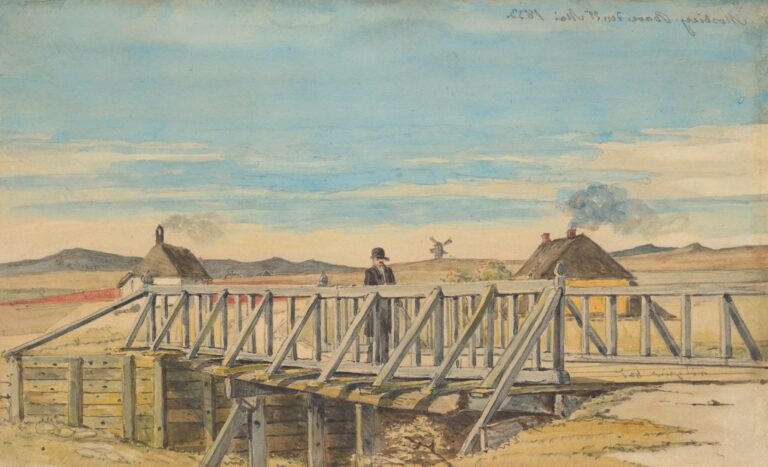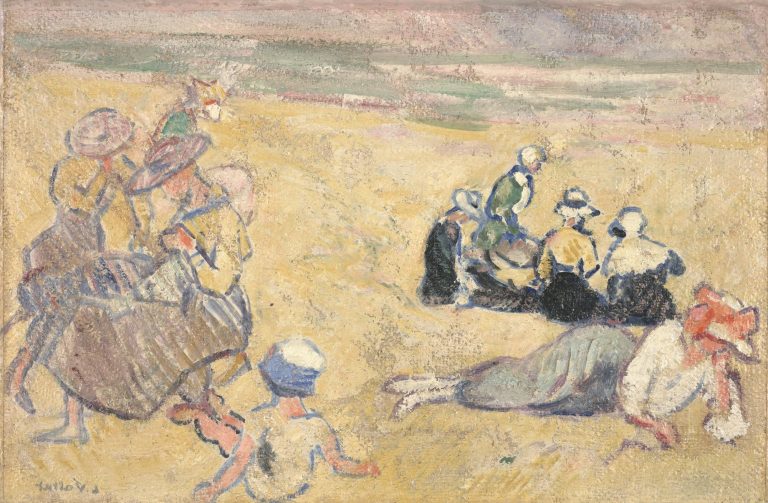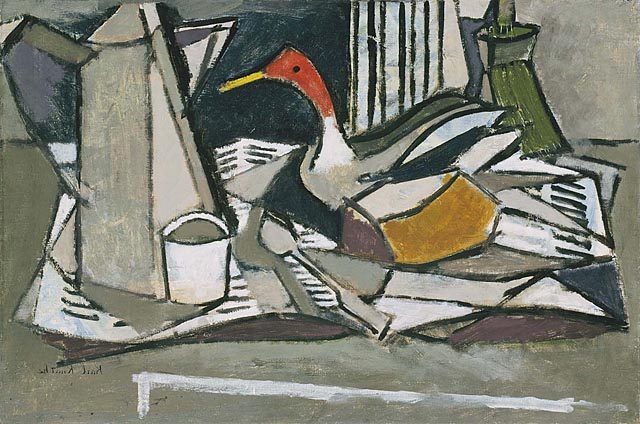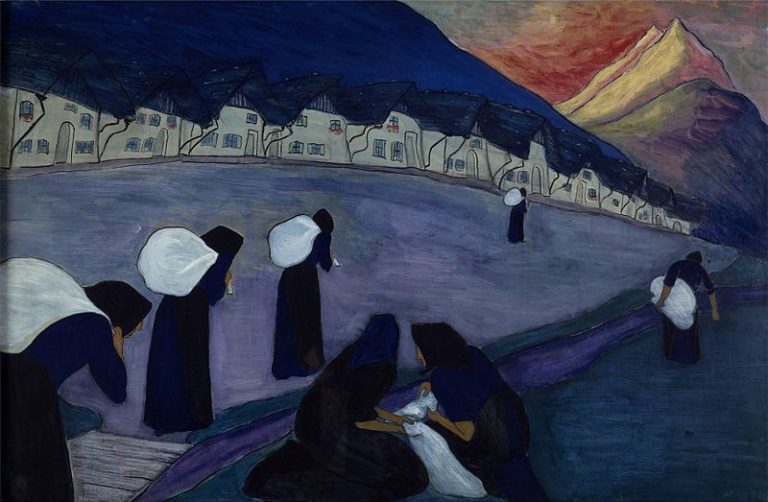Robert Rauschenberg Painter: Pioneer of the Pop Art Movement
Born: October 22, 1925, Port Arthur, Texas, U.S.
Death: May 12, 2008, Captiva, Florida, U.S.
Art Movement: Neo-Dada, Abstract Expressionism, Pop Art
Nationality: American
Teachers: Josef Albers and John Cage
Institution: Kansas City Art Institute, Académie Julian, Black Mountain College, and Art Students League of New York
Robert Rauschenberg Painter: Pioneer of the Pop Art Movement
Early Life and Education
Robert Rauschenberg’s journey from small-town Texas to becoming a groundbreaking artist was shaped by his early experiences, education at key institutions, and influential mentors who helped develop his unique artistic vision.
Formative Years
Robert Rauschenberg was born as Milton Ernest Rauschenberg on October 22, 1925, in Port Arthur, Texas. He grew up in a modest household in this small refinery town, where his father Ernest was known for his strict temperament.
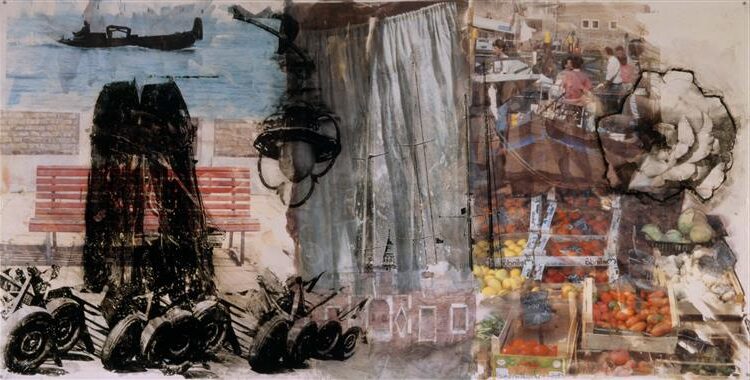
Quattro Mani IV, 1966, by Robert Rauschenberg
During his early years, Rauschenberg had little exposure to art.
After high school, he initially pursued pharmacology at the University of Texas, showing no early indication of his future artistic career. Later, he changed his first name from Milton to Robert because he thought it sounded more artistic – a small but telling sign of his developing creative identity.
His first meaningful encounter with original artwork came during a visit to the Henry E. Huntington Library, which sparked his interest in visual arts.
Black Mountain College Experience
In 1948, Rauschenberg enrolled at Black Mountain College in North Carolina, a progressive institution that would profoundly shape his artistic development. There, he studied under Josef Albers, the former Bauhaus master known for his rigorous approach to color theory and design.
Despite their conflicting artistic philosophies—Albers favored precision while Rauschenberg embraced spontaneity—this tension proved valuable for the young artist’s growth.
At Black Mountain, he also met composer John Cage, whose experimental approaches to music and ideas about chance operations deeply influenced Rauschenberg’s artistic methods.
The college’s interdisciplinary environment encouraged collaboration across art forms, allowing Rauschenberg to explore performance, photography, and sculptural elements that would later become central to his work.
Artistic Influences and Military Service
Before pursuing art seriously, Rauschenberg served in the United States Navy during World War II, where he worked as a Neuropsychiatric Technician. This medical experience gave him insight into human psychology and physical conditions that would later inform his artistic perspectives.
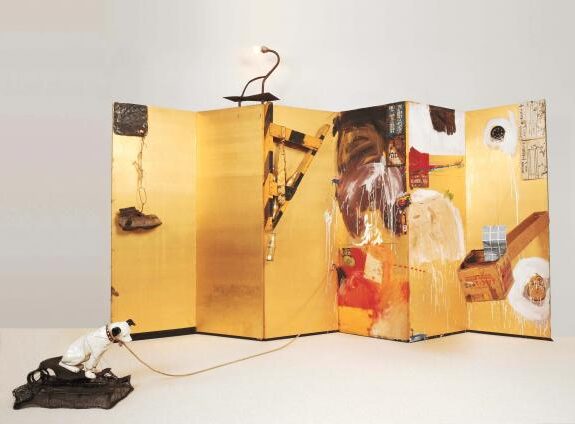
Gold Standard, 1964, by Robert Rauschenberg
After his military service, Rauschenberg studied at the Kansas City Art Institute in 1946-47, marking his formal entry into art education. He later continued his training at the prestigious Art Students League in New York City.
These diverse educational experiences exposed him to both traditional techniques and avant-garde ideas. His training, combined with his natural tendency to question artistic boundaries, laid the groundwork for his later innovations.
Rauschenberg’s willingness to incorporate everyday objects and combine different media would eventually anticipate Pop Art and influence generations of artists.
Artistic Innovations and Collaborations
Robert Rauschenberg constantly pushed artistic boundaries through innovative techniques and meaningful collaborations. His experimental approach transformed American art by blending everyday objects with traditional media and crossing disciplines.
Combines and Assemblage
Rauschenberg revolutionized art between 1954 and 1964 with his “Combines,” works that merged painting and sculpture. These pieces incorporated everyday objects like photographs, newspaper clippings, and found materials.

Allegory, 1960, by Robert Rauschenberg
His famous work “Monogram” (1955-1959) featured a stuffed angora goat with a tire around its middle, standing on a painted canvas. This blurred the line between art and life in unprecedented ways.
Rauschenberg’s assemblages challenged viewers to reconsider what constituted art. He often used discarded materials and personal items, giving new life to objects others might have thrown away.
Working alongside Jasper Johns, Rauschenberg helped bridge Abstract Expressionism and Pop Art. Their innovations influenced generations of artists who followed.
White Paintings and Monochrome Experimentation
Rauschenberg’s White Paintings (1951) consisted of panels painted entirely white. These seemingly simple works were revolutionary in their concept and execution.
The white canvases acted as screens that captured shadows, light changes, and even dust. Composer John Cage described them as “airports for the lights, shadows, and particles” in the room.
This minimalist approach influenced Cage’s famous silent composition “4’33″” and anticipated later Minimalist and Conceptual art movements. Rauschenberg’s exploration of emptiness challenged traditional ideas about artistic expression.
His monochrome period also included the Black Paintings and Red Paintings, where he explored texture and materials within limited color palettes.
Experiments in Art and Technology
In 1966, Rauschenberg co-founded Experiments in Art and Technology (E.A.T.) with engineer Billy Klüver. This organization connected artists with engineers and scientists to explore new technological possibilities in art.
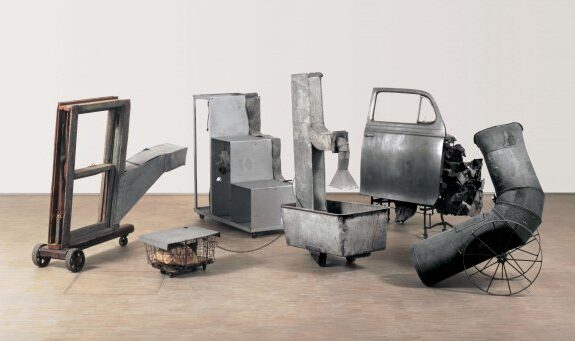
Oracle, 1965, by Robert Rauschenberg
E.A.T. hosted performances, exhibitions, and collaborations that merged artistic vision with technical innovation. The group organized the groundbreaking “9 Evenings: Theatre and Engineering” event that featured performances using new technologies.
Rauschenberg’s own work with E.A.T. included “Soundings” (1968), an installation that changed based on viewers’ voices, and “Mud-Muse” (1968-71), a pool of bubbling clay activated by sound.
His collaboration with choreographer Merce Cunningham saw him design innovative sets and costumes for dance performances. At Universal Limited Art Editions, he explored printmaking techniques that pushed boundaries of that medium.
Global Impact and Legacy
Robert Rauschenberg’s influence extended far beyond American shores, with his innovative approach to art reshaping global perspectives on mixed media and collaboration across cultures.
Rauschenberg Overseas Culture Interchange (ROCI)
ROCI represented Rauschenberg’s most ambitious international project, launched in 1984 and continuing until 1991. Through this self-funded initiative, he traveled to ten countries including China, Tibet, Japan, and the Soviet Union during a period of significant political tension.
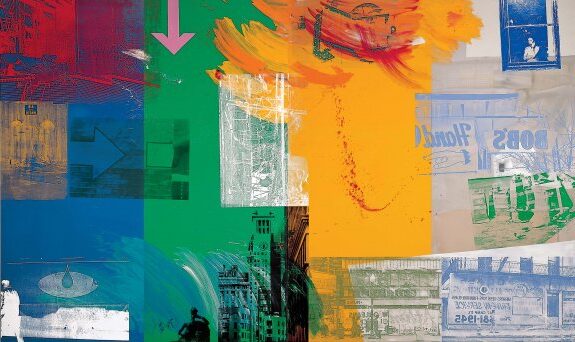
Catch (Urban Bourbon), 1993, by Robert Rauschenberg
In each location, Rauschenberg collaborated with local artists, absorbed cultural influences, and created works using indigenous materials. The resulting artworks combined his signature style with elements from host countries.
ROCI exhibitions traveled to each participating nation, fostering artistic dialogue across political boundaries. This groundbreaking project exemplified Rauschenberg’s belief that art could serve as a universal language and promote peace through cultural understanding.
Influential Exhibitions and Recognitions
Rauschenberg gained international acclaim when he won the Grand Prize at the 1964 Venice Biennale, a controversial victory that signaled America’s rising influence in the global art scene. This recognition shifted the art world’s center of gravity from Europe to the United States.
His collaboration with Gemini G.E.L. in Los Angeles produced innovative prints that circulated globally, expanding his international footprint. These technical achievements in printmaking set new standards for artistic collaboration.
Major retrospectives at the Pompidou Center in Paris, Tate Modern in London, and museums throughout Asia cemented his worldwide reputation. His works now reside in prestigious collections on every continent.
Cultural Exchange and Diverse Mediums
Rauschenberg’s artistic practice embraced cultural exchange through his exploration of diverse materials and techniques. After establishing his studio on Captiva Island, Florida, he hosted international artists and created a global creative hub.
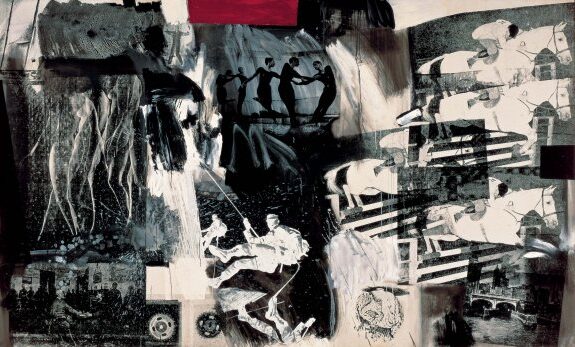
Express, 1963, by Robert Rauschenberg
His work with Graphicstudio at the University of South Florida pioneered new printmaking techniques that influenced artists worldwide. Rauschenberg experimented with silk, photography, lithography and unconventional materials from his global travels.
Through these diverse approaches, he challenged the boundaries between artistic traditions. His incorporation of elements from different cultures created a visual language that transcended national identities.
The artist’s commitment to environmental and social causes further extended his global impact, with projects addressing international concerns through collaborative art initiatives.
Frequently Asked Questions
Robert Rauschenberg pioneered significant artistic movements and created groundbreaking works that challenged traditional boundaries. His impact spans multiple artistic disciplines and continues to influence contemporary art today.
What is the significance of Robert Rauschenberg’s work in Pop Art?
Robert Rauschenberg helped bridge Abstract Expressionism and Pop Art through his innovative use of everyday objects and mass media imagery. He incorporated newspapers, photographs, and commercial items into his art, blurring the line between fine art and popular culture.
Unlike Warhol who celebrated consumer culture, Rauschenberg used popular imagery with a more critical eye. His “Combines” and silkscreen paintings from the 1950s and 60s predated and influenced the Pop Art movement.
Rauschenberg’s technique of transferring magazine and newspaper images onto canvas became a hallmark approach that many Pop artists later adopted.
How did Robert Rauschenberg contribute to the Combines movement?
Rauschenberg invented the “Combines” in the 1950s, a term describing his three-dimensional works that merged painting and sculpture. These revolutionary pieces incorporated found objects like tires, stuffed animals, and furniture directly onto painted surfaces.
“Monogram” (1955-1959), featuring a taxidermied goat with a tire around its middle on a painted platform, exemplifies the Combines approach. These works rejected traditional art categories and embraced the chaotic material reality of everyday life.
The Combines established Rauschenberg as a pioneer who expanded artistic boundaries beyond traditional painting and sculpture.
What are some of the most iconic pieces created by Robert Rauschenberg?
“Bed” (1955) transformed his actual quilt, sheet, and pillow into art by mounting them on a wall and applying paint. This piece challenged notions of what could constitute art.
“Canyon” (1959), a Combine featuring a stuffed bald eagle, exemplifies his bold incorporation of unconventional materials. “Retroactive I” (1964) showcases his silkscreen technique with images of JFK and space exploration.
“Erased de Kooning Drawing” (1953) stands as one of his most conceptually important works, while his “White Paintings” (1951) influenced later minimalist art.
Can you describe the relationship between Jasper Johns and Robert Rauschenberg?
Rauschenberg and Jasper Johns maintained both a personal and artistic relationship during the 1950s. They greatly influenced each other’s work while living in adjoining New York studios.
Their artistic dialogue helped them both break from Abstract Expressionism toward new artistic languages incorporating everyday objects and imagery. Though their styles differed, both artists explored similar questions about representation and artistic meaning.
After their personal relationship ended, both continued as important figures who shaped American art. Their artistic partnership remains one of the most influential creative exchanges in 20th century art.
Why is the ‘Erased de Kooning Drawing’ by Robert Rauschenberg historically important?
In 1953, Rauschenberg asked Willem de Kooning for a drawing specifically to erase it. This radical act transformed destruction into creation and challenged fundamental ideas about artistic authorship and permanence.
The piece exists as a nearly blank sheet with faint traces of the original drawing, mounted in a gold frame with a hand-lettered label. It represents a pivotal conceptual artwork that questioned artistic value and the creative process itself.
This work anticipated later conceptual art movements by decades and demonstrated that artistic ideas could be as important as physical objects.
What are some lesser-known but impactful facts about Robert Rauschenberg’s life and career?
Born Milton Ernest Rauschenberg in 1925, he changed his name to Robert as part of his artistic transformation. This personal reinvention reflects his lifelong artistic exploration and boundary-pushing.
Rauschenberg established the Rauschenberg Overseas Culture Interchange (ROCI) in the 1980s. He collaborated with artists in ten countries around the world. This project demonstrated his belief in art as a tool for cross-cultural communication.
Some art historians believe his dyslexia influenced his innovative visual approach and non-linear compositions. His work in performance art and dance extended his artistic vision beyond static visual art. He collaborated with choreographer Merce Cunningham.


